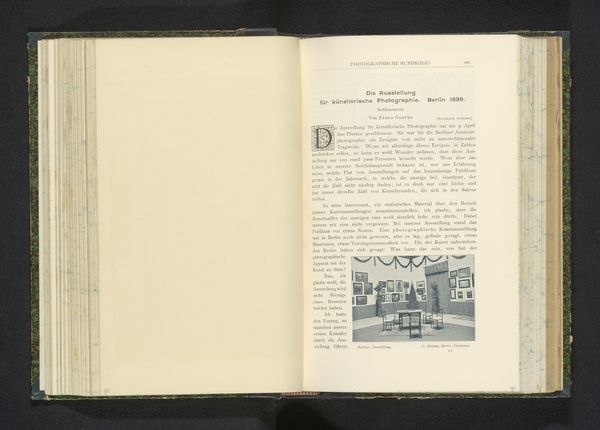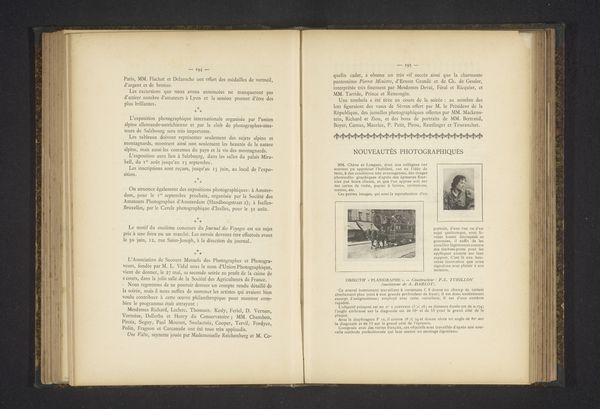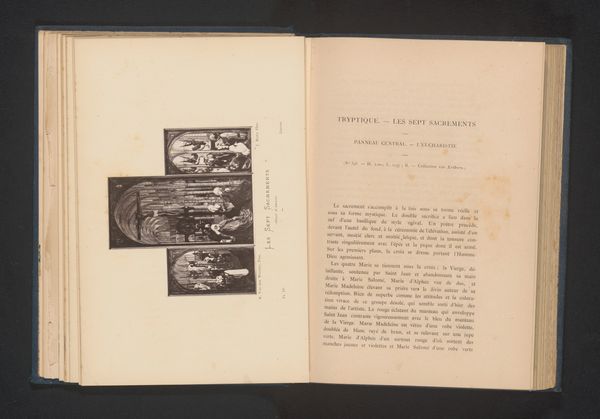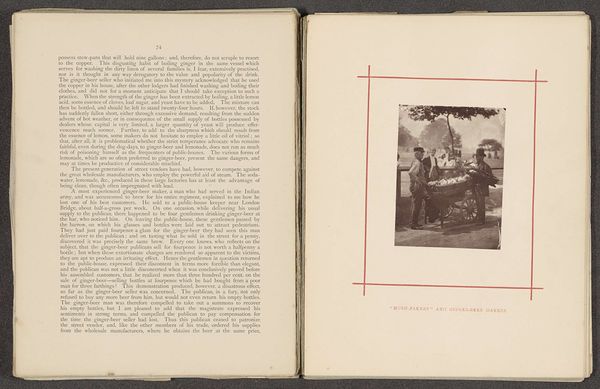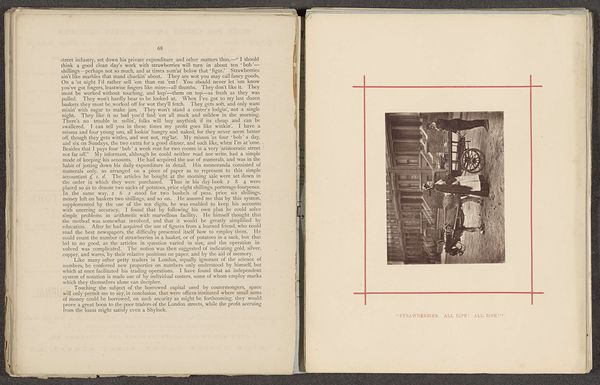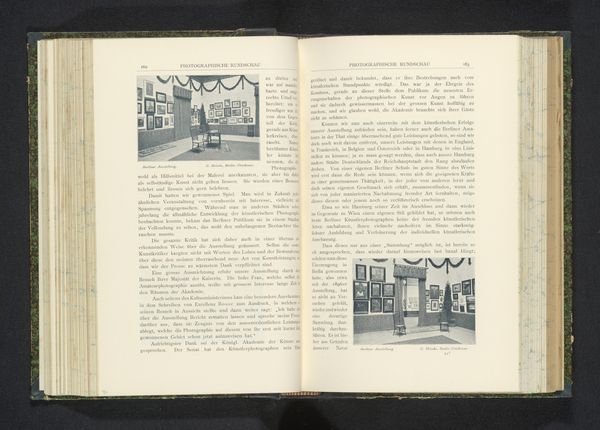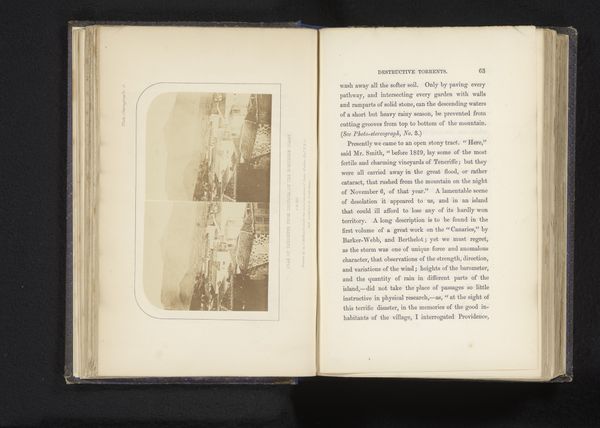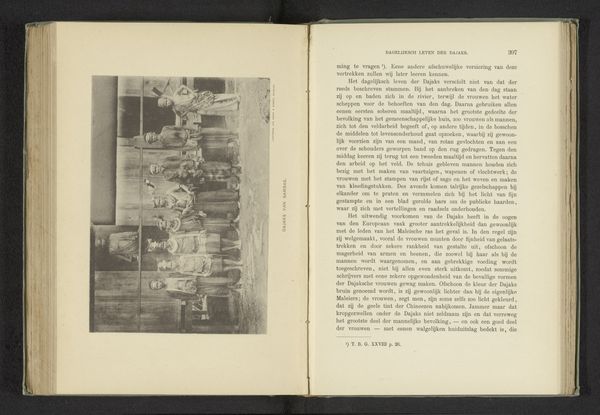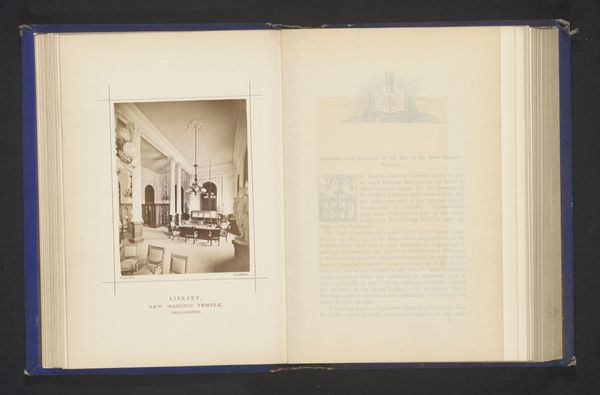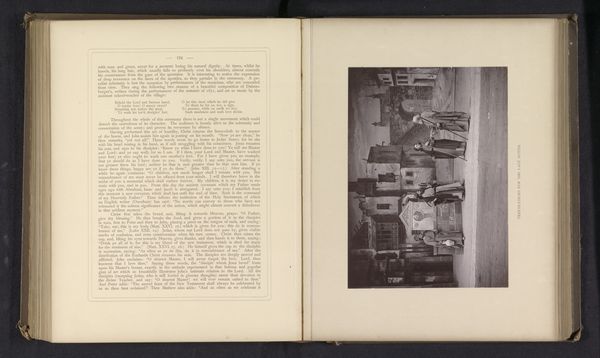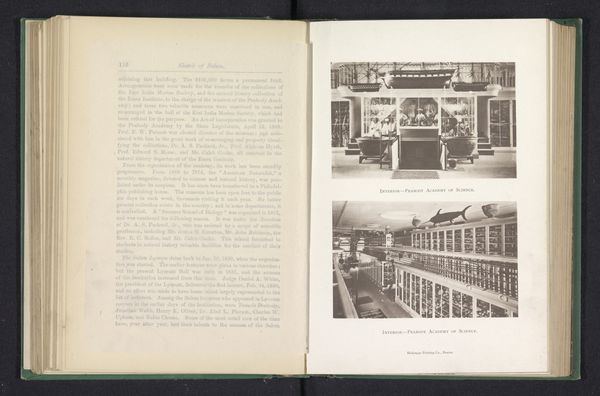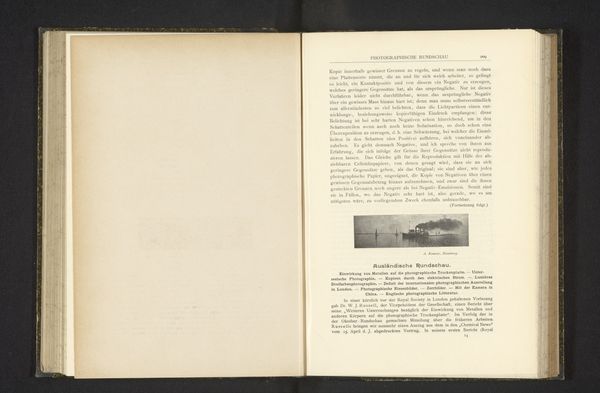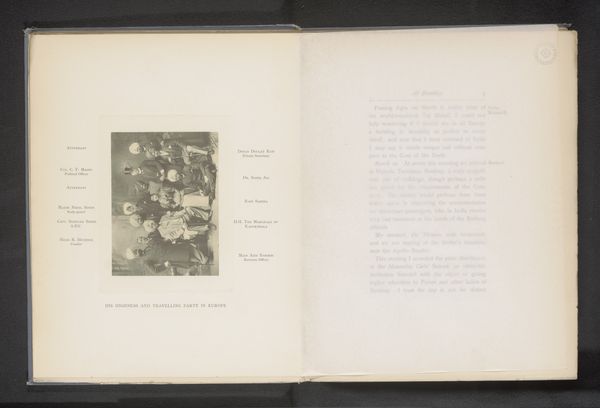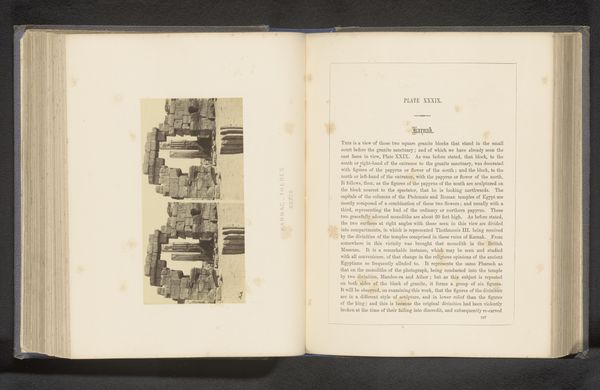
graphic-art, print, etching, textile, paper, photography, collotype, photomontage
#
script typeface
#
graphic-art
#
aged paper
#
still-life-photography
#
art-nouveau
#
paper non-digital material
#
paperlike
# print
#
etching
#
textile
#
personal journal design
#
paper
#
photography
#
collotype
#
photomontage
#
folded paper
#
thick font
#
letter paper
#
decorative-art
#
paper medium
#
thin font
Dimensions: height 49 mm, width 93 mm
Copyright: Rijks Museum: Open Domain
Editor: So, here we have “Interieur van het kantoor van A.W. Elson & Company,” dating from before 1908. It’s a photomontage, including collotype, etching, and textile. I find it striking how this image merges what feels like an objective photograph with such deliberate manipulation of the textual components. What can you tell me about the methods and processes used to create it? Curator: It is a great observation that this artwork combines several processes! Let’s consider the socio-economic context and how this determined the art itself. What statement does combining these various methods and materials make about the status of photography as compared to traditional graphic arts? How did labor function within the “organised skilled corps of retouchers"? Editor: Well, the co-existence of techniques suggests that photography may still have been proving its worth to those accustomed to more established, crafted, printmaking methods. The textual inclusion even refers to etching. Maybe photography still wasn’t regarded as having quite the same artistic depth. Regarding labor, the text references organized steps for its staff...perhaps more like a factory of the arts? Curator: Precisely! Note the phrase "organised skilled corps." How does the language around that suggest certain levels of specializations and efficiencies? It suggests a hierarchy and standardization, moving away from a romanticized idea of the lone artist. Consider, too, the reference to 'No. 3 Japan Vellum', it subtly elevates the object through a careful description of its parts! Editor: So it’s about the art object’s relationship with commercialized labor, printing techniques, and class signifiers of "fine" materials. I never thought about art-making having a production line. Curator: And notice how an emphasis on the making allows us to challenge accepted ideas around artistic authorship and valuation. Think of what has value and why, based on both labor and the components themselves! Editor: It's incredible to see how the processes and materials speak volumes about the era's views on art, labor, and value. Thanks for revealing how to assess art using these criteria!
Comments
No comments
Be the first to comment and join the conversation on the ultimate creative platform.
